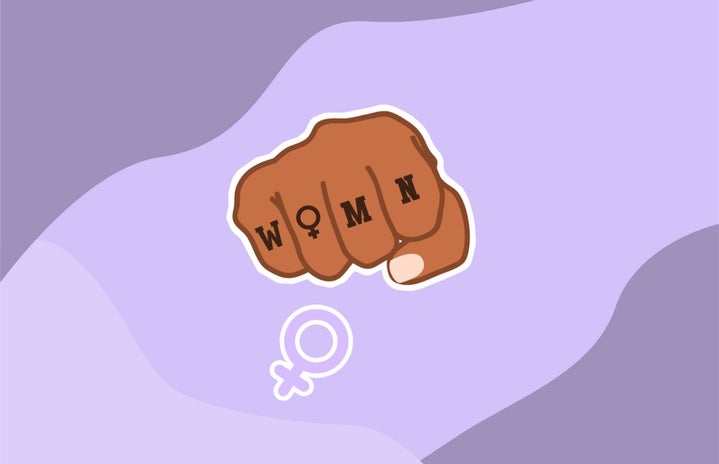Because of numerous history classes throughout our academic career, most of us are familiar with names like Rosa Parks, Martin Luther King, Jr. and Harriet Tubman. In the past, history classes stopped at the Civil Rights Movement — that is, if the curriculum even bothered to mention or teach it.
Aside from watching the Wikipedia version of Martin Luther King, Jr.’s history via YouTube videos in elementary school, the only time I learned about the Civil Rights Movement or African-American history aside from slavery in a formal academic setting was in my sophomore year AP United States history class. Even then, my teacher only briefly taught us about it right before our AP exam.
As a result, I looked to the internet to learn more about the history that my high school failed to teach me. With you, I want to share some of their names, their stories and their legacies.
- Claudette Colvin
-
Nine months before Rosa Parks famously refused to give up her seat on a Montgomery, Alabama, bus, Claudette Colvin did the same. The only difference was Colvin was 15 years old, whereas Parks was a grown woman.
On March 2, 1955, coming back from high school, a bus driver told Colvin to give up her seat for a Caucasian woman. She refused, demanding she paid the fare and had a constitutional right to remain in her seat. As a result, she was arrested and brought to the women’s penitentiary instead of the juvenile court.
That night, after her reverend bailed her out of prison, she was terrified for her life. She stood up to three white men in places of authority, and she knew that lynchings and burnings were not uncommon for African Americans challenging bus laws. To protect his family, her father stayed up all night armed with his shotgun, and her neighbors were alert as well: “Probably nobody on King Hill slept that night.”
Although her recognition has been a gradual process over the last few decades, Colvin represents the youth–especially the young women–who stood up for themselves in the face of injustice.
- Marsha P. Johnson
-
Marsha P. Johnson was a force to be reckoned with. She was a transgender sex worker, a drag queen and an activist. Before changing her name to Marsha P. Johnson, Johnson went by Black Marsha. Later on, she changed it to Marsha “Pay It No Mind” Johnson, implementing her response whenever anyone asked her about her gender.
Most famously, she is known for her involvement in the Stonewall uprisings following the police raid at the Stonewall Inn in 1969. Later in 1970, she established the Street Transvestite Action Revolutionaries (STAR) with her friend and fellow transgender activist Sylvia Rivera. STAR was an organization committed to supporting transgender youth experiencing homelessness in New York City.
Johnson was captivating. From her bold outfits consisting of signature pieces, like bright red heels, costume jewelry, colorful wigs with fake fruit and sequined dresses, which she often found in trash cans, she caught the eye of Andy Warhol, who later featured her in his polaroid portfolio, Ladies and Gentlemen.
Furthermore, she was an advocate for AIDS patients as the epidemic grew, marched with activist group ACT UP and kept her friends company on their deathbeds. She was later diagnosed with HIV before her untimely death in 1992. She was only 46 years old.
Today, we remember Johnson for her bravery in the face of homophobia in a time where many transgender activists were overlooked. Her legacy lives on as the Marsha P. Johnson Institute continues to defend and advocate for transgender rights.
- Ruby Bridges
-
For most kids, going to elementary is just a stepping-stone in their academic lives. However, for 6-year-old Ruby Bridges, it was so much more. In 1960, Bridges was the first African-American student to integrate into an elementary school in the south.
Before attending, the school district made African-American students take an entrance exam to see if they were good enough to attend an all-white school. Afterward, Bridges and five other students passed. However, Bridges was the only one set to attend William Frantz Elementary School after two of the students chose to remain at their current school, and the other three students eventually attended McDonough Elementary School. She was alone, but she wasn’t scared.
Although her parents were hesitant to send her, they wanted her to have the opportunities they did not have. After passing the entrance exam, the school delayed her acceptance until Nov. 14. Every day as her mother walked her to school, four court marshals escorted them as angry mobs greeted them.
Multiple parents pulled their children from the school, and only one teacher named Barbara Henry was willing to teach her, so for the entire year, she only taught Bridges. Although Bridges ate lunch alone, had no classmates and only played with her teacher at recess, she never missed school.
As an adult, Bridges founded the Ruby Bridges Foundation in New Orleans, Louisiana, in 1999 to promote tolerance and equal respect in education.
- Big Mama Thornton
-
Before Elvis Presley stole the song “Hound Dog” that helped launch him to stardom as “The King of Rock ’n’ Roll,” Mike Stoller and Jerry Lieber wrote “Hound Dog” specifically for Big Mama Thornton. To understand Thornton and give her the recognition she deserves, you have to listen to her.
Born Willie Mae Thornton in Montgomery, Alabama, Thornton is one of the most influential soul-blues singers in American history. Her career began when she was a child working in a tavern in Montgomery. When the bar’s regular singer was drunk, she told her boss she could fill in.
As a teenager, she began traveling with Sammy Green’s Hot Harlem Revue after working on a garbage truck. Afterward, she decided to try to make it on her own as a singer in Houston, Texas, where she began performing in the Bronze Peacock Club, signed to Peacock Records and became known as Peacock’s Belting Lady Killer of the Blues.
Listening to Thornton, you feel her soul; you feel her raw unapologetic emotion. Without Thorton, arguably, you would not have had Presley, Janis Joplin or rock ’n’ roll itself.
Although I am a non-black BIPOC, I will continue to educate myself and learn about African-American issues, history and current events. In today’s world where knowledge is at our fingertips, it is a choice and a privilege not to educate ourselves.



